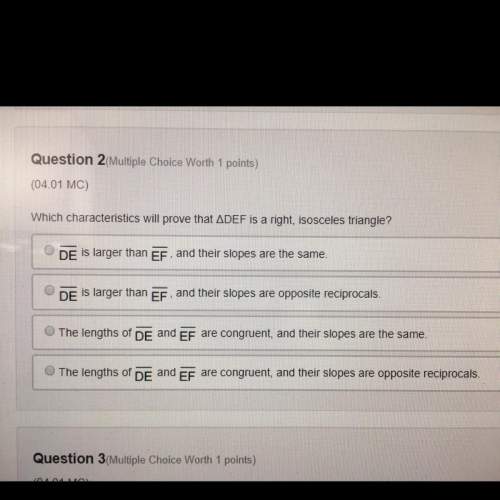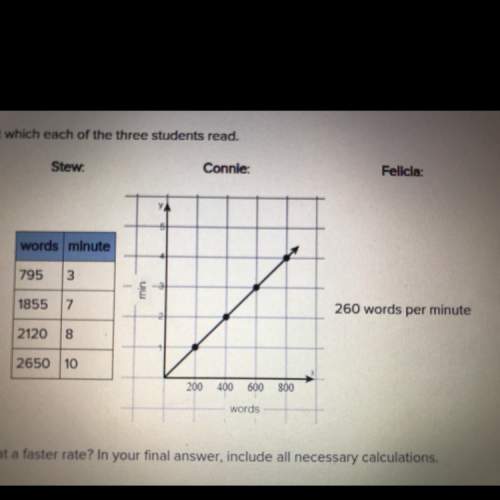
Mathematics, 25.06.2019 18:40 jewlbug4358
Researchers wanted to know if there is a link between proximity to high-tension wires and the rate of leukemia in children. to conduct the study, researchers compared the rate of leukemia for children who lived within 1/2 mile of high-tension wires to the rate of leukemia for children who did not live within 1/2 mile of high-tension wires. the researchers found that the rate of leukemia for children near high-tension wires was higher than the rate for those not near high-tension wires. can the researchers conclude that proximity with high-tension wires causes leukemia in children? a. no, because this is an observational study. b. yes, because this is a designed experiment, which allows for statements of causality. c. no, because this is a designed experiment. d. yes, because this is an observational study, which allows for statements of causality.

Answers: 3


Another question on Mathematics


Mathematics, 21.06.2019 17:00
In tossing one coin 10 times, what are your chances for tossing a head? a tail? 2. in tossing one coin 100 times, what are your chances for tossing a head? a tail? 3. in tossing one coin 200 times, what are your chances for tossing a head? a tail? deviation = ((absolute value of the difference between expected heads and observed heads) + (absolute value of the difference between expected tails and observed tails)) divided by total number of tosses. this value should always be positive. 4. what is the deviation for 10 tosses? 5. what is the deviation for the 100 tosses? 6. what is the deviation for 200 tosses? 7. how does increasing the total number of coin tosses from 10 to 100 affect the deviation? 8. how does increasing the total number of tosses from 100 to 200 affect the deviation? 9. what two important probability principles were established in this exercise? 10. the percent of occurrence is the obtained results divided by the total tosses and multiplied by 100%. toss the coins 100 times and record your results. calculate the percent occurrence for each combination. percent head-head occurrence: percent tail-tail occurrence: percent head-tail occurrence:
Answers: 3

Mathematics, 21.06.2019 22:10
Atype of plant is introduced into an ecosystem and quickly begins to take over. a scientist counts the number of plants after mmonths and develops the equation p(m)= 19.3(1.089)^m to model the situation. most recently, the scientist counted 138 plants.assuming there are no limiting factors to the growth of the plants, about how many months have passed since the plants werefirst introduced? a)o 6.1b)0.6.6c)10 72d)o 23.1
Answers: 3

Mathematics, 21.06.2019 23:00
Find the distance between the pair of points a(-1,8) and b(-8,4)
Answers: 1
You know the right answer?
Researchers wanted to know if there is a link between proximity to high-tension wires and the rate o...
Questions


Mathematics, 14.04.2021 15:30


Mathematics, 14.04.2021 15:30




Mathematics, 14.04.2021 15:30


Mathematics, 14.04.2021 15:30


Mathematics, 14.04.2021 15:30

Mathematics, 14.04.2021 15:30

Mathematics, 14.04.2021 15:40


Mathematics, 14.04.2021 15:40

Mathematics, 14.04.2021 15:40


Mathematics, 14.04.2021 15:40





